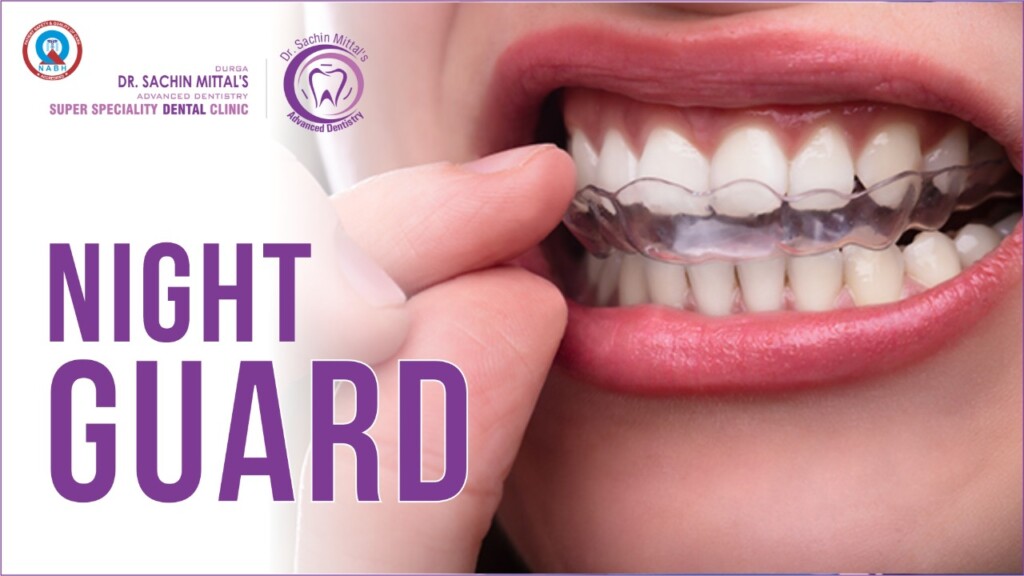- Who Needs a Mouthguard?
- When playing sports, why should you use a mouthguard?
- If I have braces, may I use a mouthguard?
- How Should I Take Care of My Mouthguard?
Mouthguards are tooth-coverings that are worn over the teeth to protect them from injury from teeth grinding and sports.

Mouthguards are divided into three categories:
Stock mouthguards have already been molded and are ready to use. They are reasonably priced and are available at most sporting goods and retail stores. However, they are bulky, make breathing and speech difficulties, and give little or no protection, and there is little that can be done to improve their fitness. Dentists advise against using them.
Many sports goods businesses sell boil and bite mouth protection, which may provide a better fit than stock mouth protectors. The thermoplastic material is used to make the “boil and bite” mouthguard. After softening in hot water, it is placed in the mouth and molded around the teeth using finger and tongue pressure.
Individually designed and constructed mouth protectors are made in a dental office or a professional laboratory according to your dentist’s recommendations. A mouthguard is formed over the model using a unique material after your dentist takes an impression of your teeth.
This custom-made mouthguard is more expensive due to the particular material used and the additional time and effort.
Mouthguards usually only cover your upper teeth, but your dentist may build one for your lower teeth as well (for example, if you have braces or another fixed dental appliance on your lower jaw). Your dentist will be able to recommend the best mouthguard for you.
A good mouthguard should be comfortable, tear-resistant, sturdy, and easy to clean, and should not interfere with your breathing or speaking.
If you grind your teeth at night, a nocturnal bite plate or bite splint, a sort of mouth guard, may be made to avoid tooth damage.
Who Needs a Mouthguard?
Anyone who participates in contact sports such as football, boxing, soccer, ice hockey, basketball, lacrosse, and field hockey, both children and adults, should wear mouth guards. Even individuals engaged in noncontact sports (such as gymnastics) and recreational activities (such as skateboarding and mountain biking) that could result in a mouth injury would benefit from wearing a protective mouthguard.
To minimize tooth damage, adults and children who grind their teeth at night should have a nocturnal bite plate or bite splint constructed.
FAQ
Q1. When playing sports, why should you use a mouthguard?
Because accidents can happen during any physical activity, wearing a mouthguard while participating in sports can help reduce the risk of mouth-related injuries to your lips, tongue, and soft tissues. Mouthguards can also protect you from chipped or broken teeth, dental nerve injury, and tooth loss.
Q2. If I have braces, may I use a mouthguard?
Yes. A correctly fitted mouth guard may be especially critical for persons who wear braces or have fixed bridge work since an injury to the face can harm braces or other fixed appliances. Your dentist or orthodontist will be able to identify which mouthguard is ideal for your specific oral work. A word of caution: do not use any orthodontic retainers or other removable appliances while participating in any contact sports or leisure activities that put your mouth in danger of harm.
Invisalign trays are an exception, as they can be worn during sports and even with mouth protection. If you wear Invisalign trays and participate in sports, talk to your dentist about whether you should use them and how you should wear them.
Q3. How Should I Take Care of My Mouthguard?
To take care of your mouthguard, follow these steps:
● Before and after each usage, rinse your mouthguard with cold water or a mouth rinse, or clean it with light soap and a toothbrush.
● Rinse the mouthguard thoroughly after cleaning it in cool, soapy water.
● To keep or travel the mouth guard, place it in a hard, perforated container. This allows for air circulation and aids in the prevention of damage. Keep the mouth guard in fresh, clean water if it’s made of acrylic.
● To avoid altering the mouth guard’s design, keep it away from high temperatures like hot water, heated surfaces, or direct sunlight.
● Check the mouth guard for general wear on a regular basis. Replace it if it develops holes or tears, or if it gets loose or causes discomfort.
● Bring the mouthguard to each of your regular dental appointments so that your dentist can examine it.

There’s certainly a great deal to know about this
subject. I like all the points you’ve made. https://Odessaforum.biz.ua/